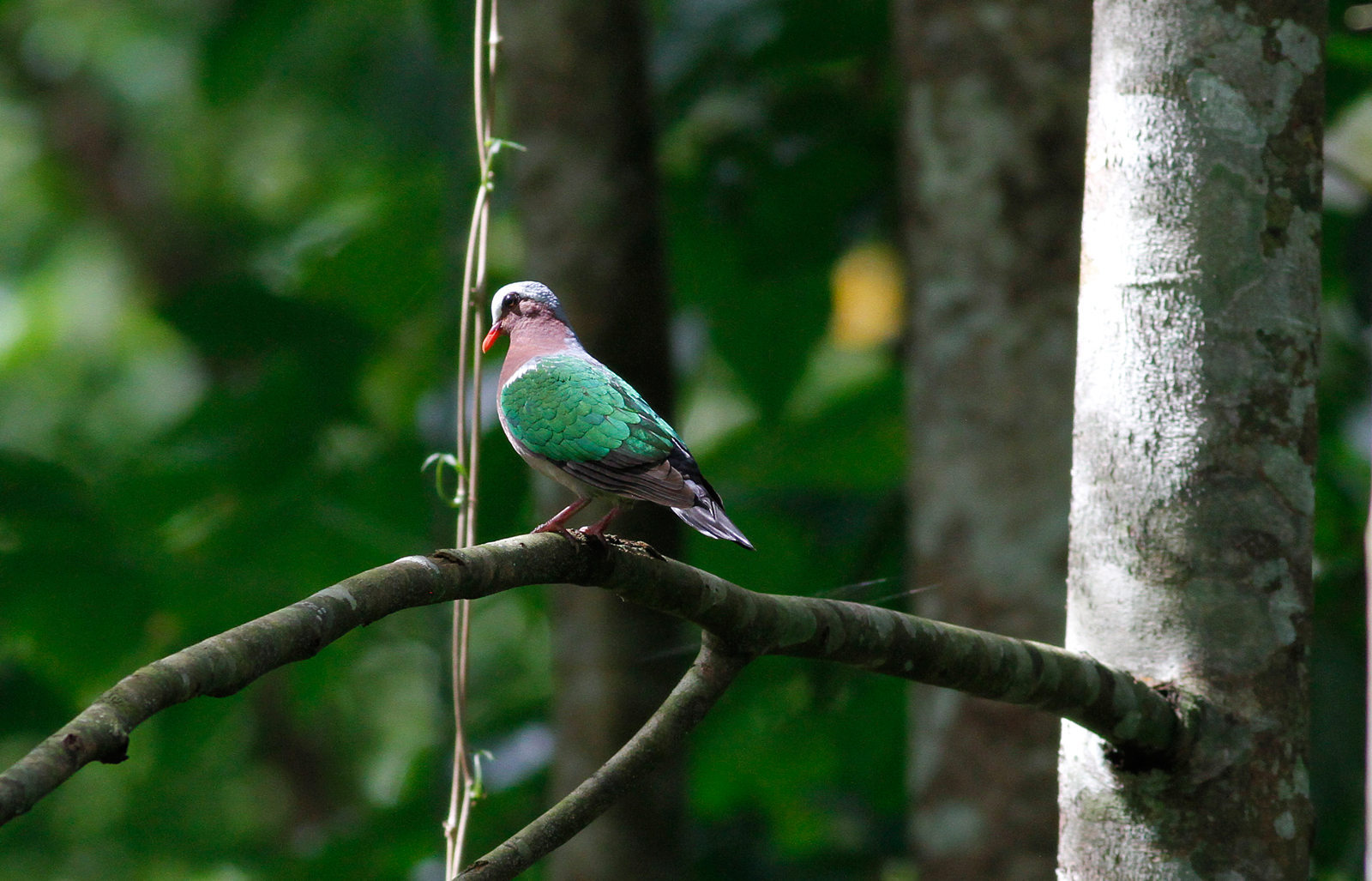 |
| Greater and Lesser Sandplovers - In addition to the obvious bill size differences, also note the pale legs of GSP and the very steep forehead of LSP |
 |
| Lesser Crested Terns with Greater Crested and Common Tern |
 |
| Gull-billed Tern |
 |
| Shikra - a common species throughout Sri Lanka |
 |
| Stork-billed Kingfisher - a localised species |
 |
| Yellow-eared Bulbul - an endemic species found in the Highland areas |
 |
| Zitting Cisticola - Horton Plains |
 |
| Sri Lanka White-eye - an endemic found from mid to high Hills |
 |
| Ceylon Tree Nymph - endemic |
 |
| Green Garden Lizard - endemic |
 |
| Sri Lanka Kangaroo Lizard - endemic |
 |
| Hill or Pacific Swallow - as the name suggests found in the Highlands |
 |
| Female Asian (Western) Koel - a common species throughout Sri Lanka |
 |
| Spot-winged Thrush - an endemic species more often heard than seen in the wet zone forests |
 |
| White-faced Starling - an endemic species found only in the wet zone forests |
 |
| Velvet-fronted Nuthatch - a forest species |
 |
| Sri Lanka Blue Magpie - confined to the wet zone forests |
 |
| Sinharaja Forest - a Biosphere Reserve |
 |
| Juvenile Changeable (Crested) Hawk Eagle - a very common and approachable raptor |
 |
| Black-capped Bulbul - an endemic species |
 |
| Male Asian Paradise Flycatcher - Two morphs occur in Sri Lanka including the stunning white morph |
 |
| Toque Macaque - endemic |
 |
| Purple-faced Leaf Monkey - endemic |
 |
| Tickell's Blue Flycatcher - an uncommon resident |
 |
| Brown-breasted Flycatcher - an uncommon winter migrant |
 |
| Ashy-headed Laughingthrush - endemic and gregarious in the forest |
 |
| Grey-capped Emerald Dove - a beautiful and shy species of the forest found throughout Sri Lanka |
 |
| Sri Lanka Grey Hornbill - endemic and found in both the wet and dry zones |
 |
| Green-billed Coucal - endemic to the wet zone forests and preferring dwarf bamboo |
 |
| Sri Lanka Junglefowl - a fairly common species throughout found in both the wet and dry zones |
 |
| Pete and a Sri Lanka Junglefowl at Sinharaja |
 |
| Ruddy Mongoose - the commonest of 4 species of mongoose |
 |
| Palm Squirrel - a very common species throughout |
 |
| Snake sp - Sinharaja Forest |
 |
| Sri Lanka Hanging Parrot - this tiny endemic parrot is easily found at fruiting trees within the forest and forest edge |
 |
| Sri Lanka Frogmouth - The female is rufous and the male is grey |
 |
| Sri Lanka Green Pigeon or Pompadour Green Pigeon - a common endemic species found in forested areas throughout Sri Lanka |
 |
| Pete having Ceylon Tea at the Blue Magpie Lodge, Sinharaja Forest |
 |
| Leech - birding the wet zone does involve befriending leeches, though only in low numbers |





Brilliant Chris !! I loved Sri lanka, a place to head back to one day for sure.
ReplyDeleteCheers Gary - Good to hear from you! Be good to catch ip properly...
DeleteGood times!
ReplyDeleteCertainly were Pete - need to find time to upload week 2!
ReplyDelete